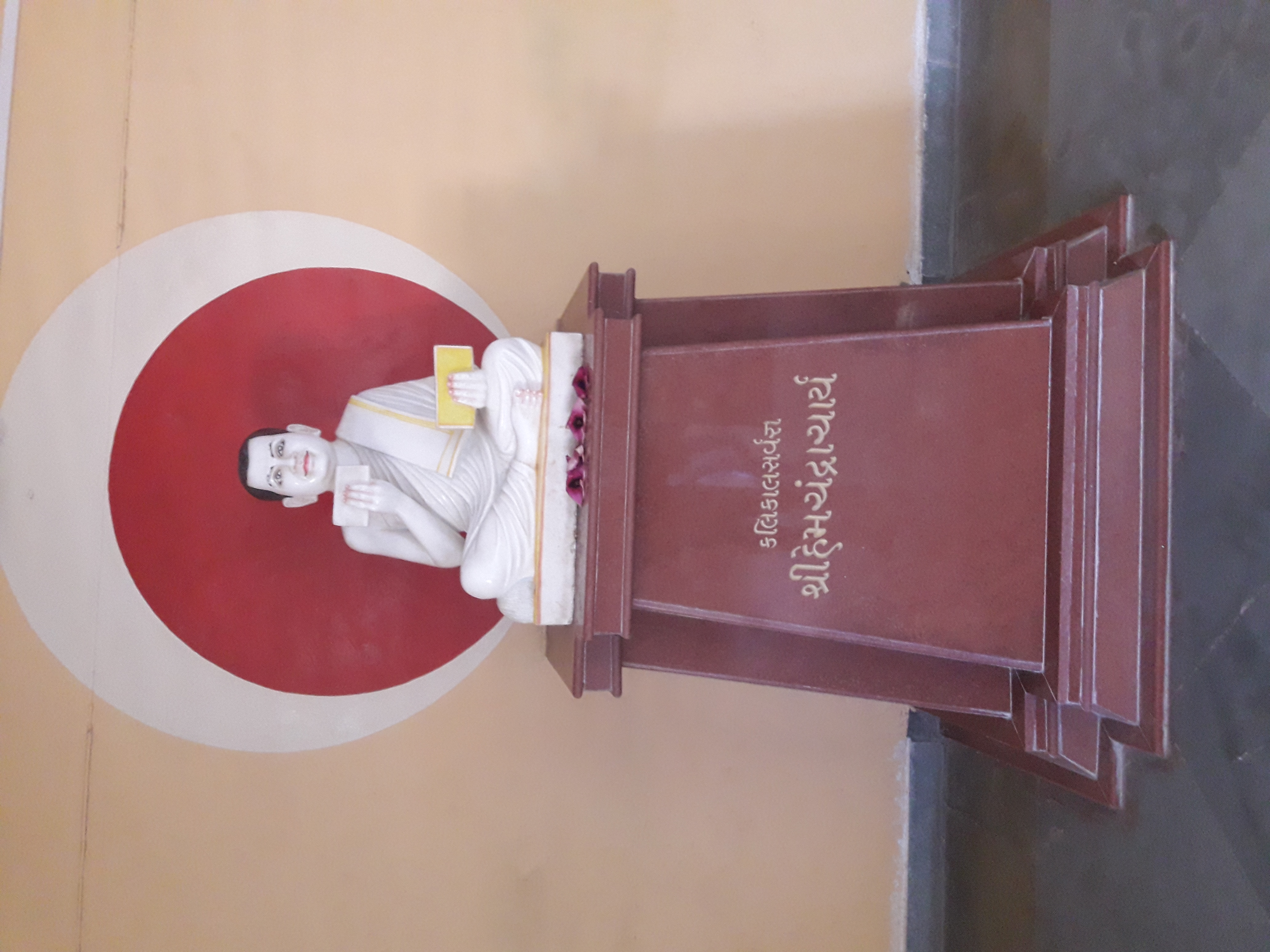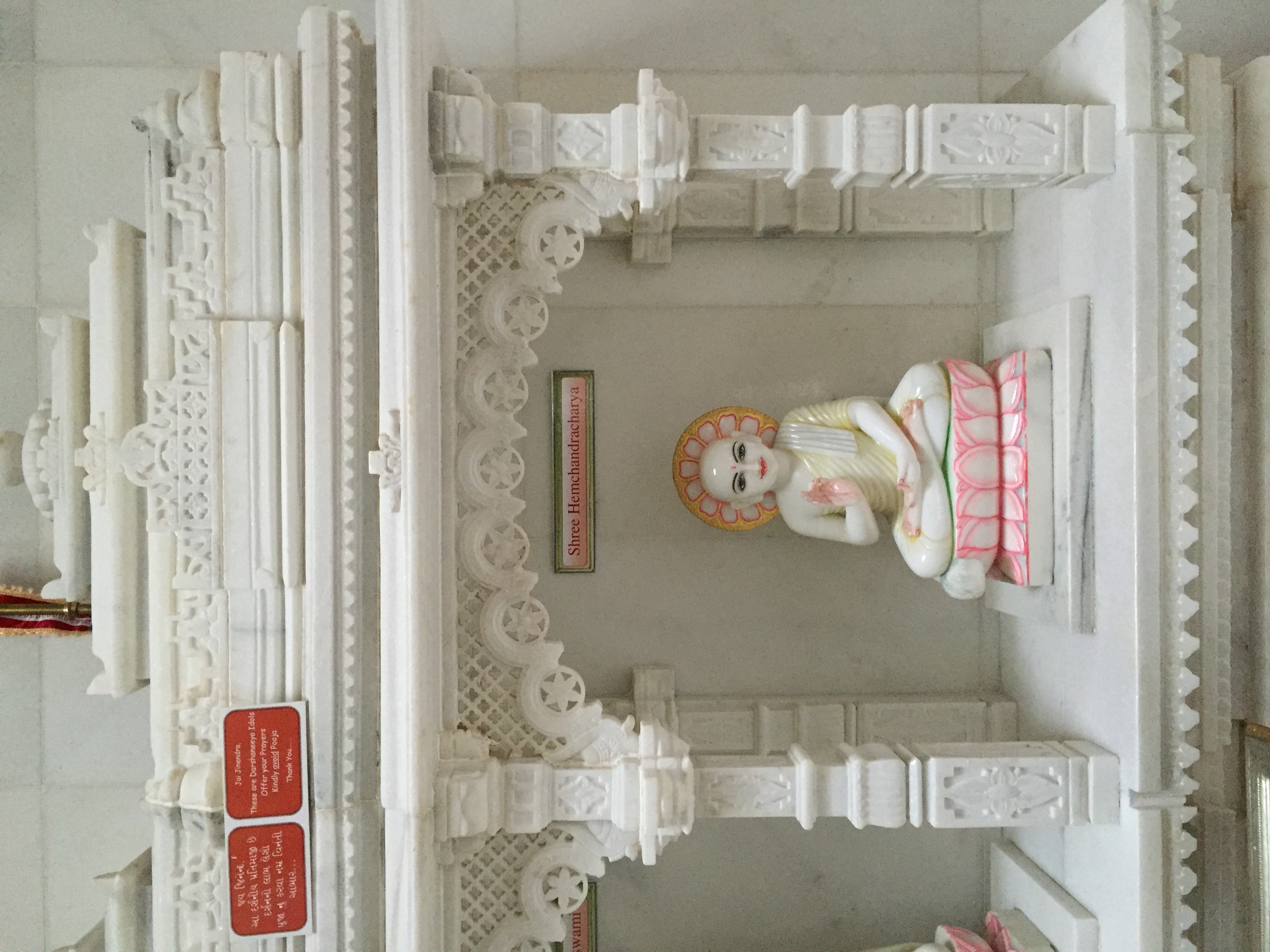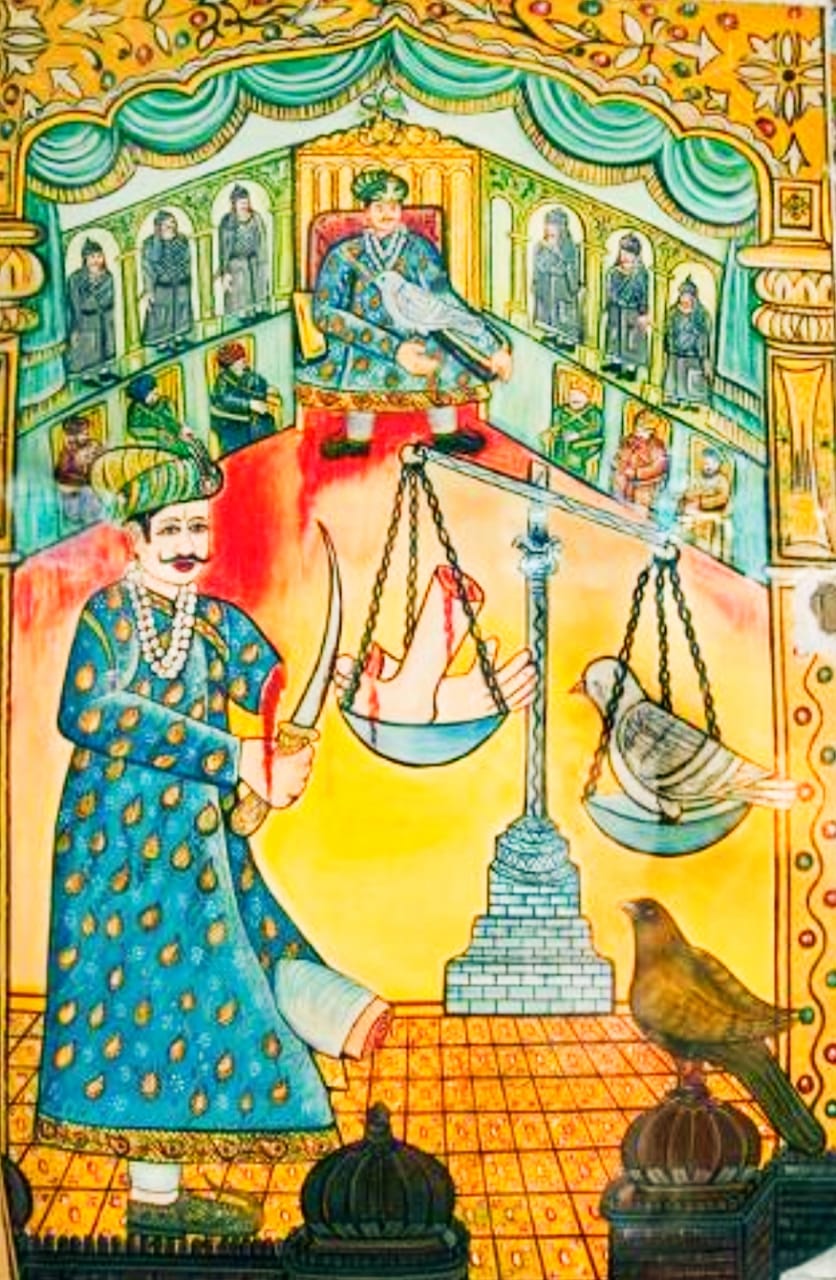|
śalākāpuruṣa
According to the Jain cosmology, the śalākapuruṣa ( sa, शलाकपुरूष) "illustrious or worthy persons" are 63 illustrious beings who appear during each half-time cycle. They are also known as the ''triṣaṣṭiśalākāpuruṣa'' (63 illustrious persons). The Jain universal or legendary history is a compilation of the deeds of these illustrious persons. Their life stories are said to be most inspiring. The ''śalākāpuruṣa'' comprise 24 ''Tirthankaras'' (Teaching Gods), twelve Chakravartin (universal monarchs, emperors of six continents), nine Balabhadras (gentle heroes), nine ''Narayanas'' (warrior heroes) and nine ''Prati-narayanas'' (anti-heroes). According to Jain cosmology, time is without beginning and eternal. The ''Kālacakra'', the cosmic wheel of time, rotates ceaselessly. The wheel of time is divided into two half-rotations, ''Utsarpiṇī'' or ascending time cycle and ''Avasarpiṇī'', the descending time cycle, occurring continuously after eac ... [...More Info...] [...Related Items...] OR: [Wikipedia] [Google] [Baidu] |
Acharya Hemachandra
Hemachandra was a 12th century () Indian Jain saint, scholar, poet, mathematician, philosopher, yogi, grammarian, law theorist, historian, lexicographer, rhetorician, logician, and prosodist. Noted as a prodigy by his contemporaries, he gained the title ''kalikālasarvajña'', "the knower of all knowledge in his times" and ''father of Gujarati language''. Born as Changadeva, he was ordained in the Śvētāmbara school of Jainism in 1110 and took the name Somachandra. In 1125 he became an adviser to King Kumarapala and wrote ''Arhanniti'', a work on politics from a Jain perspective. He also produced ''Trishashti-shalaka-purusha-charita'' (“Deeds of the 63 Illustrious Men”), a Sanskrit epic poem on the history of important figures of Jainism. Later in his life, he changed his name to Hemachandra. Early life Hemachandra was born in Dhandhuka, in present-day Gujarat, on Kartika Sud Purnima (the full moon day of Kartika month). His date of birth differs according to sources ... [...More Info...] [...Related Items...] OR: [Wikipedia] [Google] [Baidu] |
Balabhadra
In Jainism, Balabhadra or Baladeva are among the sixty-three illustrious beings called ''śalākāpuruṣas'' that are said to grace every half cycle of time. According to Jain cosmology, ''śalākāpuruṣa'' are born on this earth in every ''Dukhama-sukhamā'' ''ara''. They comprise twenty-four '' tīrthaṅkaras'', twelve ''chakravartins'', nine ''balabhadra'', nine ''narayana'', and nine ''pratinarayana''. Their life stories are said to be most inspiring. According to the Jain ''puranas'', the ''Balabhadras'' lead an ideal Jain life. Nine Balabhadras According to the ''Digambaras'' nine ''Balabhadras'' of the present half cycle of time ('' avasarpini'') are: * Vijaya * Acala * Bhadra * Suprabha * Sudarśana * Nandisena * Nandimitra * Rāma * Balarama Balarama (Sanskrit: बलराम, IAST: ''Balarāma'') is a Hindu god and the elder brother of Krishna. He is particularly significant in the Jagannath tradition, as one of the triad deities. He is also known as Hal ... [...More Info...] [...Related Items...] OR: [Wikipedia] [Google] [Baidu] |
Hemachandra
Hemachandra was a 12th century () Indian Jain saint, scholar, poet, mathematician, philosopher, yogi, grammarian, law theorist, historian, lexicographer, rhetorician, logician, and prosodist. Noted as a prodigy by his contemporaries, he gained the title ''kalikālasarvajña'', "the knower of all knowledge in his times" and ''father of Gujarati language''. Born as Changadeva, he was ordained in the Śvētāmbara school of Jainism in 1110 and took the name Somachandra. In 1125 he became an adviser to King Kumarapala and wrote ''Arhanniti'', a work on politics from a Jain perspective. He also produced ''Trishashti-shalaka-purusha-charita'' (“Deeds of the 63 Illustrious Men”), a Sanskrit epic poem on the history of important figures of Jainism. Later in his life, he changed his name to Hemachandra. Early life Hemachandra was born in Dhandhuka, in present-day Gujarat, on Kartika Sud Purnima (the full moon day of Kartika month). His date of birth differs according to source ... [...More Info...] [...Related Items...] OR: [Wikipedia] [Google] [Baidu] |
Jain Cosmology
Jain cosmology is the description of the shape and functioning of the Universe (''loka'') and its constituents (such as living beings, matter, space, time etc.) according to Jainism. Jain cosmology considers the universe as an uncreated entity that has existed since infinity with neither beginning nor end. Jain texts describe the shape of the universe as similar to a man standing with legs apart and arms resting on his waist. This Universe, according to Jainism, is broad at the top, narrow at the middle and once again becomes broad at the bottom. Six eternal substances According to Jains, the Universe is made up of six simple and eternal substances called ''dravya'' which are broadly categorized under Jiva (Living Substances) and Ajiva (Non Living Substances) as follows: '' Jīva'' (Living Substances) * Jīva i.e. Souls – ''Jīva'' exists as a reality, having a separate existence from the body that houses it. It is characterised by ''chetana'' (consciousness) and ''upayog ... [...More Info...] [...Related Items...] OR: [Wikipedia] [Google] [Baidu] |
Parshvanatha
''Parshvanatha'' (), also known as ''Parshva'' () and ''Parasnath'', was the 23rd of 24 ''Tirthankaras'' (supreme preacher of dharma) of Jainism. He is the only Tirthankara who gained the title of ''Kalīkālkalpataru (Kalpavriksha in this "Kali Yuga").'' Parshvanatha is one of the earliest ''Tirthankaras'' who are acknowledged as historical figures. He was the earliest exponent of Karma philosophy in recorded history. The Jain sources place him between the 9th and 8th centuries BCE whereas historians consider that he lived in the 8th or 7th century BCE. Parshvanatha was born 273 years before Mahavira. He was the spiritual successor of 22nd tirthankara Neminatha. He is popularly seen as a propagator and reviver of Jainism. Parshvanatha attained moksha on Mount Sammeda ( Madhuban, Jharkhand) popular as Parasnath hill in the Ganges basin, an important Jain pilgrimage site. His iconography is notable for the serpent hood over his head, and his worship often includes Dharanendr ... [...More Info...] [...Related Items...] OR: [Wikipedia] [Google] [Baidu] |
Jinasena
Jinasena (c. 9th century CE) was a monk and scholar in the ''Digambara'' tradition of Jainism. He was patronized by the Rashtrakuta king Amoghavarsha I. He was the author of ''Adipurana'' and '' Mahapurana''.Early medieval developments (500–1100) Encyclopaedia Britannica Jinasena was the disciple of '' Acharya Virasena'' and he completed the commentary '''' on '''', a revere ... [...More Info...] [...Related Items...] OR: [Wikipedia] [Google] [Baidu] |
Harivamsa Purana
was composed by Acharya Jinasena in 783 AD. It is divided into 66 cantos and contains 12,000 slokas. The book aims to narrate the life of Neminatha, the twenty-second Tirthankara in Jainism. According to the Jain sources, Krishna is the first cousin of Tirthankara Neminatha. Therefore, Krishna's adventures too occupy a significant portion of the book. Harivamsa Purana suggests that Draupadi was married to only Arjuna as opposed to Hindu traditional accounts which suggests that she was married to all five Pandavas. Synopsis In general, all Jaina Harivamśa narratives go far beyond what one might consider to be fitting for the ''Harivamśa'', i.e. the story of Krishna and his relatives, or Mahabharata material. They consist of four larger parts: (1) ''Harivamśa'', including the story of Krishna, his ancestors and progeny; (2) ''Nemicarita'', the biography of the 22nd Tīrthankara, Krishna’s cousin; (3) ''Pāndavacarita'', containing the central narrative of the ''Mahab ... [...More Info...] [...Related Items...] OR: [Wikipedia] [Google] [Baidu] |
Rishabhanatha
Rishabhanatha, also ( sa, ऋषभदेव), Rishabhadeva, or Ikshvaku is the first (Supreme preacher) of Jainism and establisher of Ikshvaku dynasty. He was the first of twenty-four teachers in the present half-cycle of time in Jain cosmology, and called a "ford maker" because his teachings helped one across the sea of interminable rebirths and deaths. The legends depict him as having lived millions of years ago. He was the spiritual successor of Sampratti Bhagwan, the last Tirthankar of previous time cycle. He is also known as Ādinātha which translates into "First (''Adi'') Lord (''nātha'')", as well as Adishvara (first Jina), Yugadideva (first deva of the yuga), Prathamarajeshwara (first God-king), Ikshvaku and Nabheya (son of Nabhi). Along with Mahavira, Parshvanath, Neminath, and Shantinath; Rishabhanath is one of the five Tirthankaras that attract the most devotional worship among the Jains. According to traditional accounts, he was born to king Nabhi and q ... [...More Info...] [...Related Items...] OR: [Wikipedia] [Google] [Baidu] |
Shantinath
Shantinatha was the sixteenth Jain tirthankar of the present age (Avasarpini). Shantinatha was born to King Vishvasena and Queen Aiira at Hastinapur in the Ikshvaku dynasty. His birth date is the thirteenth day of the Jyest Krishna month of the Indian calendar. He was also a Chakravartin and a Kamadeva. He ascended to the throne when he was 25 years old. After over 25,000 years at the throne, he became a Jain monk and started his penance. According to Jain beliefs, he became a siddha, a liberated soul which has destroyed all of its karma. Biography in Jain tradition Shantinatha was the sixteenth Jain '' Tīrthankara'' of the 24 tirthankars of the present age ('' avasarpini''). Life before renunciation He was born to King Vishvasena and Queen Achira at Hastinapur on 13th day of Jestha Krishna in the Ikshvaku clan. Before the birth of Shantinatha, Queen Achira dreamt the sixteen most auspicious dreams. Shantinatha spent 25,000 years as a youth (''kumāra kāla'') and marrie ... [...More Info...] [...Related Items...] OR: [Wikipedia] [Google] [Baidu] |
Samavayanga Sutra
Samavayanga Sutra (c. 3rd-4th century BCE) is the 4th amongst the 12 Angas of the Jaina canon. The sutra is believed to have been composed by Gandhara Sudharmaswami. This ancient manuscript is the holy book of the Svetambara sect. This text contains the essence of Jain religion, defined and catalogued systematically. Written c. 300 BCE, it is a part of the collection of texts containing Lord Mahavira’s teachings, collectively termed as Agama Sutras. Subject matter of the Agama Samavayanga Sutra contains elements of mathematics and astronomy. One of the interesting aspects of this text is its portrayal of Monasticism and spirituality in the terms of numerology. Mathematics - The Samavayanga Sutra seems to be in continuation of the Sthananga Sutra and follows the numeric method of describing substances from 1 to 1 billion. Astronomy – It contains discussion on Mount Meru, the jyotishcakra, the Jambudvipa itself, the measurements used in the Jaina canon, the Jaina Loka ... [...More Info...] [...Related Items...] OR: [Wikipedia] [Google] [Baidu] |
Rudra
Rudra (; sa, रुद्र) is a Rigvedic deity associated with Shiva, the wind or storms, Vayu, medicine, and the hunt. One translation of the name is 'the roarer'. In the Rigveda, Rudra is praised as the 'mightiest of the mighty'. Rudra means "who eradicates problems from their roots". Depending upon the periodic situation, Rudra can mean 'the most severe roarer/howler' (could be a hurricane or tempest) or 'the most frightening one'. This name appears in the Shiva Sahasranama, and R. K. Sharma notes that it is used as a name of Shiva often in later languages. The ''Shri Rudram'' hymn from the Yajurveda is dedicated to Rudra and is important in the Shaivism sect.For an overview of the Śatarudriya see: . In Prathama Anuvaka of Namakam (Taittiriya Samhita 4.5), Sri Rudram the 'mightiest of the mighty' Rudra, is revered as ''Sadasiva (meaning 'mighty Shiva')'' and Mahadeva. Sadashiva is the Supreme Being, Lord Paramashiva in the Mantra marga Siddhanta sect of Shaivism. ... [...More Info...] [...Related Items...] OR: [Wikipedia] [Google] [Baidu] |








